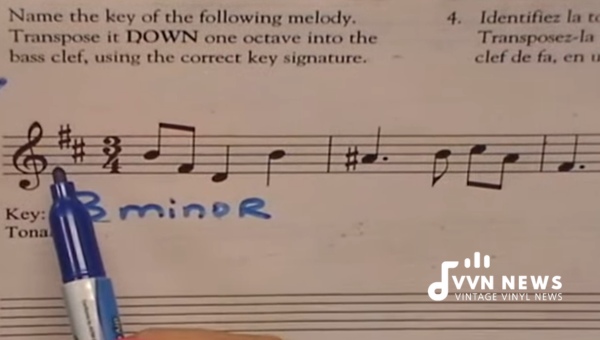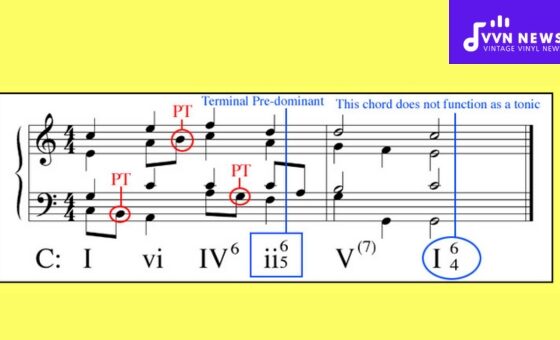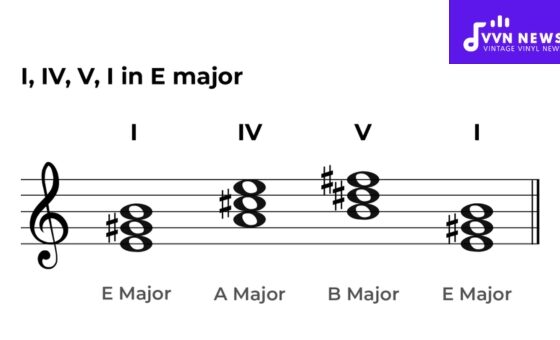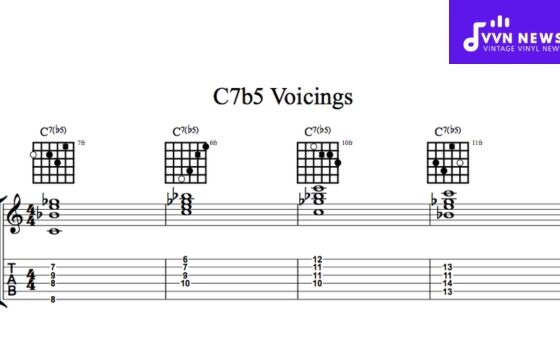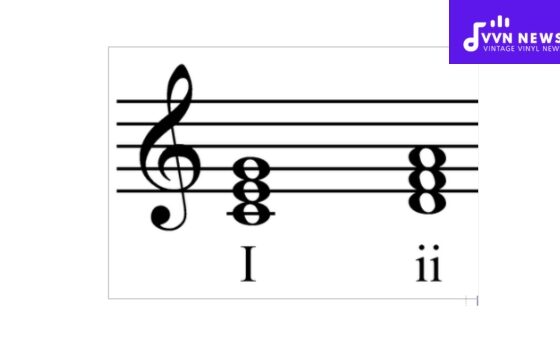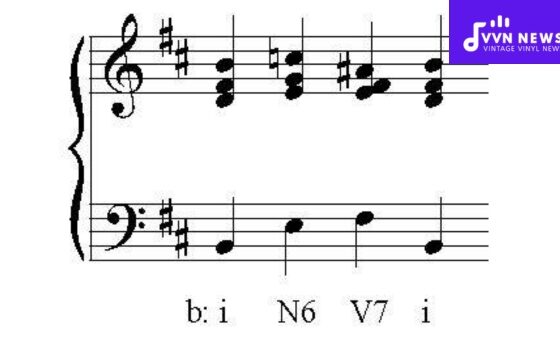Transposing music might seem like a daunting task at first, especially if you’re new to the world of music theory.
However, with a bit of guidance and practice, moving a piece down a perfect 4th can become second nature.
Today, I’ll be walking you through the steps on how to transpose down a perfect 4th.
This knowledge is essential not only for composers and arrangers but also for instrumentalists who want to adapt their parts to play with others in different ways.
Understanding the intervals in music is much like learning a new language – it opens up doors to greater expression and communication through melody.
It doesn’t matter if you’re working with a simple melody or dealing with more complex harmonies; grasping the concept of transposition is crucial.
So grab your instrument or score, because once you know these straightforward steps, you’ll be able to apply this technique across various genres and styles of music with ease.
What Is a Perfect 4th Interval?
A perfect 4th interval is one of the building blocks in music theory. Imagine you’re at a piano; start on any note, say C.
Play the fourth note up from C in the scale, which is F, and you’ve just sounded a perfect 4th.
This interval is called “perfect” because it is consonant, stable, and historically unchanged in its usage.
The sound of a perfect 4th is so ingrained in our musical understanding that many common folk tunes begin with this interval—think of “Here Comes the Bride” or the opening strains of “Amazing Grace.”
It spans four letter names (C-D-E-F) and consists typically of five half steps or semitones when counted on the piano keyboard.
The perfection lies not just in its harmony, but also in its versatility for transposition.
Also Read: F Sharp Minor Pentatonic Scale [How To Use In Your Compositions]
Why Transpose Down a Perfect 4th?

Transposing music can be likened to shifting the pitch landscape of a piece; when you transpose down a perfect 4th, you’re essentially moving the entire melodic and harmonic structure to a lower key.
There are numerous reasons one might choose to do this.
Firstly, accommodating vocal ranges is a common cause of transposition. Singers have unique vocal registers, and often a piece will fit their voices more comfortably if taken down a few pitches.
By transposing down a perfect 4th, the music may become more accessible and agreeable for their vocal range.
Secondly, instrument compatibility plays a significant role. Certain brass or woodwind instruments are naturally tuned to different keys.
To play in unison or harmony with others in an ensemble, musicians will need to transpose their parts accordingly.
Achieving creative variation is another motivator. Sometimes composers or performers wish to present their music differently by changing the original key.
This shift can evoke an entirely new atmosphere or mood, offering audiences something fresh and unexpected.
Thus, understanding how to transpose effectively ensures that your musical toolkit is well-equipped for any performance situation—whether it’s fine-tuning for an individual’s range, blending within an ensemble’s fabric, or exploring new emotional territories through key changes.
Steps to Transpose Down a Perfect 4th
To successfully transpose a piece of music down a perfect 4th, follow these steps and soon, you’ll be shifting keys with confidence.
Identify the Original Key
First things first, determine the key of the piece you’re working on. Look at the key signature, which will tell you how many sharps or flats are in the scale.
This information is critical because it sets the stage for your transposition.
Locate the Perfect 4th Interval
Now that you know your starting point, find the note that is a perfect 4th below each note in your original key.
You can easily do this by counting down five semitones (or half steps) from any given note on your instrument.
Redefine the Key Signature
Transposing down requires altering the original key signature accordingly. Moving down a perfect 4th means you will be reducing sharps or adding flats to your existing key signature.
Take care to ensure that the adjustments reflect precisely how each note shifts within your new key.
Transpose Each Note Individually
With a clear understanding of both your original and new keys, start moving every single note down by a perfect 4th interval.
Pay close attention to any accidentals present—since these may affect how certain notes are transposed outside the regular scale pattern.
Adjust Accidentals As Necessary
As you move through each measure, reassess accidents for compatibility with the new key signature.
Some might become redundant, while others might need to be introduced or modified.
Inspect Your Work
Once all notes have been transposed, scrutinize every measure. Ensure that nothing has slipped through and that all intervals reflect their proper relation within the new key; this includes harmonies and chords too.
Also Read: How Much Should You Charge For Music Lessons? [Fair Rates Guide]
Can You Transpose a Single Note Down a Perfect 4th?
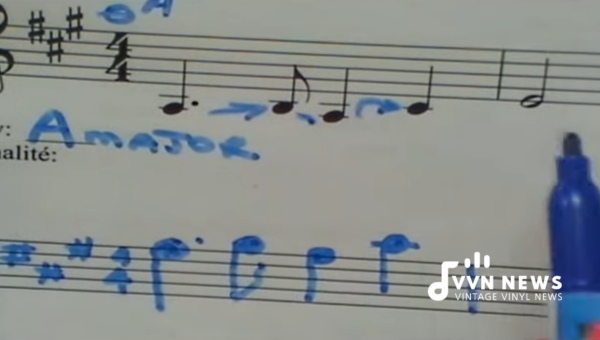
When dealing with single notes, transposing down a perfect 4th is a straightforward process.
Each note, when moved down by this interval, will land on a note that is four letter names lower.
Although the term ‘transpose’ often brings to mind more complex musical passages, this fundamental concept applies even to individual notes.
For instance, let’s consider the note G. When you transpose it down a perfect 4th, you count back four letter names – G, F, E, D – and arrive at D.
This method works uniformly across the chromatic scale; take any given note, step down four scale degrees including your starting pitch, and you find the target note of your transposition.
This ensures that regardless of whether your original pitch is natural, sharp, or flat, the transposed pitch will retain its proper accidental.
It’s essential always to maintain the exact interval distance so as not to confuse it with a major or minor third, which would change the number of half-steps.
Also Read: E Minor Pentatonic Scale [How To Use In Your Music Composition]
FAQs About Transposing Down A Perfect 4th
What exactly is transposing in music terms?
Transposing is the process of moving a piece of music up or down in pitch while maintaining the same intervallic relationships between notes.
Do I need to know how to read music to transpose?
It’s helpful, but not essential—knowing by ear can suffice for simple transposition tasks.
How does transposing affect instrument tuning?
Transposing doesn’t change the tuning of your instrument; rather, it changes the pitch level at which you play your notes.
Can transposing make a piece easier to play?
Yes, sometimes transposition is used to match a piece better with an instrument’s range, making it simpler to execute.
Is a Perfect 4th always five-half steps down when transposing down?
When moving Down a Perfect 4th, yes, you’ll be going down by five half steps from your starting note.
Conclusion
The art of transposing music down a perfect 4th can open up a world of possibilities for any musician.
Equipped with the knowledge of identifying the interval and practicing the steps outlined, you’ll find yourself seamlessly shifting pieces to accommodate different instrumental ranges or to bring fresh perspectives to well-known tunes.
With diligence and consistent practice, this skill will soon become an integral part of your musical toolkit.
